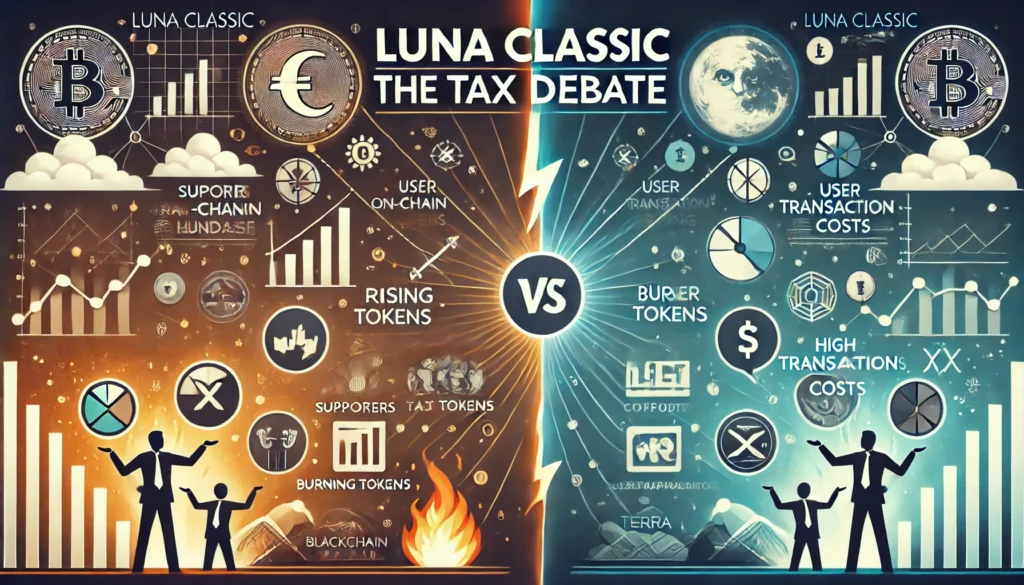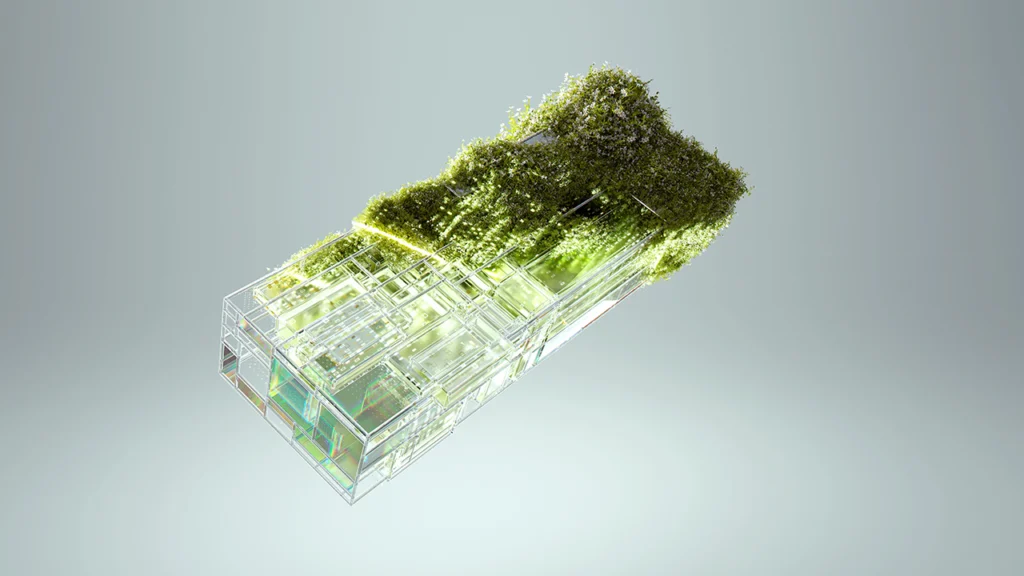Table of Contents
The Terra Classic blockchain (LUNC) is facing an important decision: the community is discussing a proposal to increase the on-chain tax rate from 0.5% to 1.5%. This move is aimed at making the ecosystem more sustainable, regaining investor confidence, and ensuring financial stability.
Introduction to Terra Classic
Terra Classic, the original form of the Terra blockchain, was taken over by a dedicated community after the infamous collapse of the Terra ecosystem in 2022. Its main goal is to stabilise and further develop the network, which once gained considerable attention for Terra’s decentralised financial system.
A central aspect of the discussion is how to improve the blockchain through tax mechanisms and other economic incentives. The proposed tax increase is an important part of this debate.
Why is greenfriendlylabs.com involved?
At GreenFriendlyLabs, we are committed to supporting the Terra Classic (LUNC) blockchain by providing a secure and reliable validator. Initially launched as LUNA in 2018, LUNC represents the foundation of the Terra blockchain. Now driven by its community, LUNC embarks on a transformative journey towards innovation and sustainability.
Mission 2030: A vision for sustainability
At greenfriendlylabs.com, we are dedicated to advancing sustainability beyond the blockchain. By 2030, we aim to establish a transparent staking fee allocation model:
This balanced approach not only ensures our operations remain efficient but also amplifies our impact on shaping a greener and more sustainable future.
Why choose greenfriendlylabs.com for LUNC staking?
In the dynamic and fast-evolving blockchain ecosystem, selecting the right staking partner for LUNC is a crucial decision. At greenfriendlylabs.com, we prioritize sustainability by using energy-efficient hardware and hosting solutions powered by renewable energy. This aligns our blockchain operations with the principles of environmental, social, and governance (ESG).
Uncompromising safety and community involvement
Security is at the heart of our operations: our robust backup systems provide a safe and reliable environment for staking. Furthermore, we adopt a community-focused approach, collaborating actively with the LUNC community to strengthen the ecosystem and promote sustainable growth.
Spread the word and encourage your friends to stake their LUNC with greenfriendlylabs – for a more sustainable future.
Why raise taxes?
The introduction of a tax on blockchain aims to address key challenges that have persisted since the collapse. Here are the main reasons cited by proponents of the proposal:
- Deflationary Effect
The tax increase would accelerate the burning of tokens by allocating more of the transaction fees to reducing the supply of LUNC. This is critical, as the current total supply exceeds 6.8 trillion tokens, a number inflated by the collapse of the original Terra economy. - Long-term Ecosystem Funding
In addition to burning tokens, a portion of the tax revenue would go into community and oracle pools. These pools will be used to support developers, new projects, and long-term staking rewards. Funding is essential to keep the platform competitive. - Stability and Protection from Spam
Higher fees could help reduce harmful activities such as spam transactions. Such activity unnecessarily stresses the blockchain and could affect network performance.
Details of the proposed tax increase
The current tax rate is 0.5% and is allocated as follows:
- 0.4% for token burning.
- 0.05% for the community pool.
- 0.05% for the Oracle pool (after the implementation of a special mechanism).
The proposal suggests increasing the tax rate to 1.5% and distributing it as follows:
- 1.2% for token burning.
- 0.15% for the community pool.
- 0.15% for the Oracle pool.
This increase would not only triple the burn rate, but also significantly improve the funding of the pools.
Advantages of the tax increase
- Accelerated Token Burning
A tripling of the burn rate could lead to a faster reduction of the total LUNC supply. This could increase deflationary pressure on the value of the token and boost investor confidence. - Long-Term Financial Stability
The additional funds in the community and oracle pools could be used to develop new projects, improve security, and provide long-term rewards for staking participants. This increases the attractiveness of the blockchain for developers and investors alike. - Increased Attractiveness to Investors
A clear mechanism for reducing the supply of tokens and the prospect of long-term rewards could attract new investors and encourage existing investors to increase their participation.
Disadvantages of the tax increase
- Deterring Users
Higher fees could make small transactions unattractive, especially for users who use dApps or trade in small amounts. This could lead to a reduction in activity on the blockchain. - Competitive Disadvantage
Compared to other blockchains that charge lower or no fees, Terra Classic could become less attractive. This might result in users and developers migrating to competitors. - Unclear Effectiveness
There is no guarantee that the tax increase will achieve the desired effect. Past experiences have shown that such measures often come with unexpected challenges.
Community Perspectives
The tax increase has sparked lively debate within the Terra Classic community. Here are some perspectives:
- Supporters: They argue that the tax increase is necessary to strengthen the ecosystem and increase deflationary pressure. In the long run, this could stabilise or even increase the value of LUNC.
- Critics: They warn that high fees could discourage users. In addition, it is unclear whether an increase will achieve the desired results.
- Undecided Members: Some call for additional data and simulations to better understand the potential impact.
Comparison with other blockchains
Other blockchain projects have implemented similar mechanisms to stabilise their economies. One example is Ethereum, which introduced a partial burning of transaction fees with the EIP-1559 upgrade. However, there are differences, particularly in the overall structure and goals of these measures.
Technological improvements
In addition to the tax increase, technological improvements have been proposed, including the so-called “reverse charge” mechanism. This approach could simplify tax administration and make transactions more efficient by automating certain tax processes.
Wrap-up
The debate about increasing the on-chain tax rate on the Terra Classic blockchain reflects the challenges and opportunities inherent in advancing a decentralized ecosystem. Proponents see the tax increase as a necessary step to sustainably fund the network, accelerate the token burn rate, and restore investor confidence. Opponents, on the other hand, warn of potential negative effects such as user migration, competitive disadvantages compared to other blockchains, and uncertainty about the measure’s actual effectiveness.
It is crucial that both sides – supporters and critics – present their arguments based on data, analyses, and respectful exchange. The Terra Classic community faces a complex decision that could significantly impact the blockchain’s long-term trajectory. The shared goal should be to find a solution that strengthens the platform’s economic stability while also addressing the needs of its users and developers.
Only through open dialogue, mutual respect, and objective discussion can the Terra Classic community make a decision that benefits everyone and ensures a sustainable future for the blockchain. The strength of a decentralized network lies in its community—and this community should work together in unity for the good of the project.
Literature
- Set On-Chain Tax Rate to 1.5%: https://validator.info/terra-classic/governance/12149
- ChristopherWHarris on github: https://github.com/ChristopherWHarris/Set-On-Chain-Tax-Rate-to-1.5-/blob/main/tax_proposal.md
- Discussions n common.xyz: https://common.xyz/terra-luna-classic-lunc/discussion/24094-set-onchain-tax-rate-to-15




